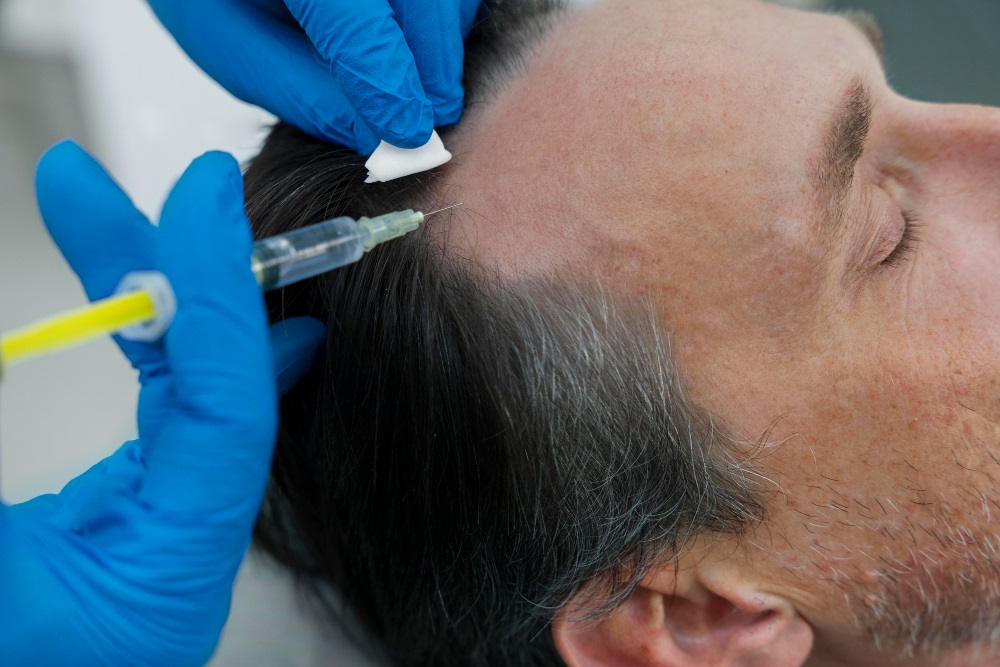
Hands up, who’s heard of the somewhat alien term “PRP Injections”? Quite unsurprisingly, this term may sound familiar only to a small niche of readers. Now, you might be wondering: “what in heaven’s name are PRP injections?” or “why should I even bother reading about them?” Sit tight, and keep your reservations aside as we dive into the fascinating world of medicine and innovation and unearth the potential benefits, practical uses, and associated risks of Platelet-Rich Plasma (PRP) injections.
In these fast-paced times, we are ever so keenly trying to remain at the peak of our health, aren’t we? PRP injections have gradually been creating a buzz in the sphere of orthopedics and cosmetic procedures, but do they live up to the hype? Just another fad or a promising medical breakthrough, it’s high time we got to the bottom of this mystery.
In this blog post, we are pledging to deliver you a comprehensive insight into the realm of PRP injections. Together, we will explore what these injections are, why they’ve started cropping up in conversations, the associated pros and cons, and the stance medical science holds towards such injections. Whether you are entirely oblivious to the term, or dabbling at the edge of curiosity or you’re an informed reader looking for a more in-depth understanding, this post promises something for everyone.
PRP Injections: The What’s
To truly understand the concern around PRP injections, let’s start from the basics: what exactly are they? Naturally occurring in the body, platelets are tiny blood cells that play a critical role in helping the body form clots to stop bleeding. But their function isn’t limited to that- they contain hundreds of proteins called growth factors which are integral to healing injuries.
PRP, which stands for Platelet-Rich Plasma, is plasma with many more platelets than what is typically found in blood. The concentration of platelets — and, thereby, the concentration of growth factors — can be 5 to 10 times greater in PRP. To develop a PRP preparation, blood is first drawn from a patient. The platelets are then separated from other blood cells and their concentration is increased during a process called centrifugation.
PRP injections are prepared from one’s blood and injected into another area of the body to promote healing. Used in various medical procedures, PRP injections have been investigated to foster healing in numerous conditions including injuries to tendons, ligaments, muscles, or joints.

The Why’s of PRP Injections
The invasive nature of PRP injections may elicit questions about their purpose of usage. Well, to put it simply, healing is the primary objective behind this practice.
When PRP is injected into the damaged area of the body, it can stimulate tissue growth and speed up the healing process. Thanks to the concentration of growth factors in PRP, it also can spur the development of new blood vessels, a process known as angiogenesis, improving circulation to the area.
Beyond orthopedics, PRP has been implemented in dental and oral surgery, neurosurgery, cosmetic surgery, and more. In recent years, PRP has also been used as a method of rejuvenation for thinning hair and as an adjunct to facial rejuvenation procedures.
Unmasking the Pros and Cons of PRP Injections
The potential benefits of PRP injections seem tantalizing, but as with any medical procedure, it’s crucial to weigh the rewards against the risks.
The foremost advantage revolves around the healing potential of PRP. Its growth factor-rich content can help stimulate a potent healing response in areas where it’s difficult for the body to heal on its own. If you’ve got a chronic injury that hasn’t responded to other treatments, PRP could potentially offer relief.
On the flip side, one of the primary concerns about PRP injections is that there isn’t enough robust and consistent scientific evidence at present to definitively back up the guaranteed claims of improved healing. Other drawbacks of PRP include cost implications, as many insurance plans do not cover the injections and the potential for side effects, such as infection, nerve injury, or tissue damage.
PRP Injections: Worth the Hype or Not?
In the grand scheme of things, PRP injections certainly intrigue and present potential in various medical fields. However, one can’t overlook the inherent need for comprehensive studies and solid scientific validation.
As a prudent consumer, your awareness, coupled with informed decision-making with your doctor, is your best defence. PRP injections could arguably hold promise for future treatment modalities, but we need stronger research and regulation to fully support its use confidently. Thus, a thorough discussion with your healthcare provider is urged before choosing to embark on this route.
Over time, the medical industry will continue to probe the efficacy of PRP injections and unravel its full potential. For now, PRP appears to be more of a health mystery, a grey zone in the realm of therapeutics, exciting yet elusive. The world waits and watches as science unfolds the truth behind the hype.





